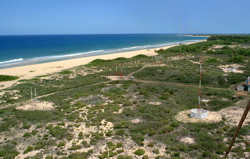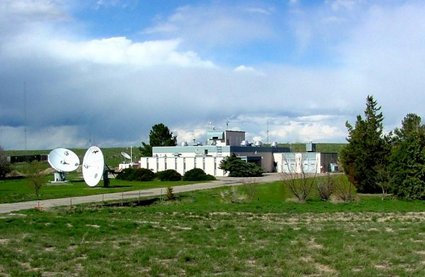How do I calculate local time when I see a broadcast time in UTC?
To obtain your local time, you will either need to subtract or add a certain number of hours from UTC depending on how many time zones you are away from Greenwich, England. This map (PDF courtesy of the USNO) shows the standard difference from UTC time to local time for various cities around the word. It has a key to help you find your local time. Additionally, you may try this online time calculator.
If your country uses Daylight Savings Time (DST), you will have to adjust for it if you are trying to figure out local time for a particular broadcast. Daylight Savings Time does not affect UTC; UTC refers to time on the zero or Greenwich meridian, which is not adjusted to reflect changes either to or from Daylight Saving Time.
So, how can I found out what Universal Time is right now?
It's easy! There are several ways:
1.) Here's the easy answer to this question if you're currently hooked up to the internet. UTC is currently: "Universal Time from the USNO"
2.) Listen to a major broadcaster like the BBC World Service, Voice Of America or Radio Australia. Typically, major international broadcasters will announce UTC at the top of the hour, then again periodically during their shows.

NIST Radio Station WWVH antenna field in Barking Sands, Kauai. This station broadcasts atomic timecode information to Hawaii and the Pacific Ocean.
3.) Tune to one of the standard time stations. A list of those stations can be found here. You'll also usually have luck tuning to 5,000, 10,000, 15,000 or 20,000kHz. In North America, WWV in Fort Collins, Colarado, uses these frequencies and is usually easy to hear even on very inexpensive radios. Since I live in North America, I keep the WWV stations programmed into the memory slots on my portable shortwave radio. As a rule of thumb, you'll hear WWV better on 5,000 and 10,000 kHz in the evening, and on 10,000, 15,000 and 20,000kHz better during the daytime hours.
4.) Today, it is easier than ever to get an inexpensive clock that automatically adjusts itself to one of the world's atomic clocks. In fact, they are even available as travel clocks and watches.
If your radio supports it, you should consider setting your radio clock to UTC. Otherwise, consider keeping a regular wall or alarm clock set to UTC near your radio.
So, now that you've nailed down Universal Time (UTC), you need to learn how to find stations and broadcasts that interest you. Continue...



